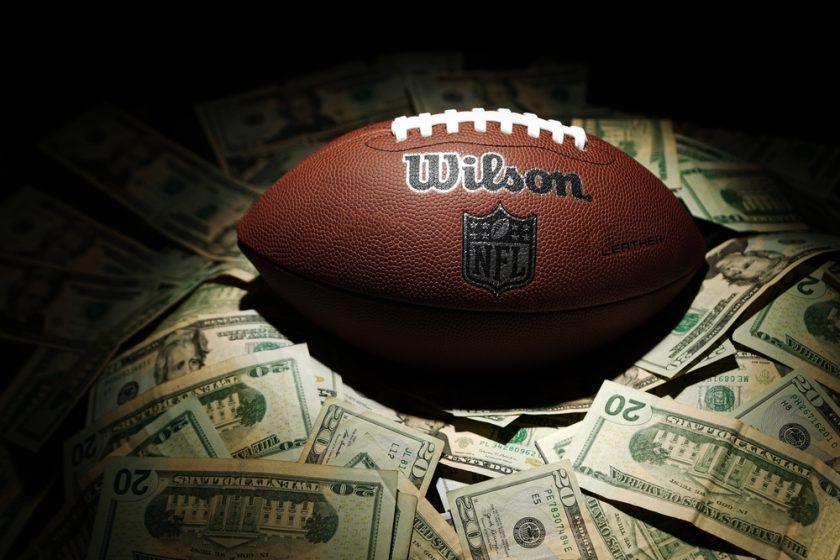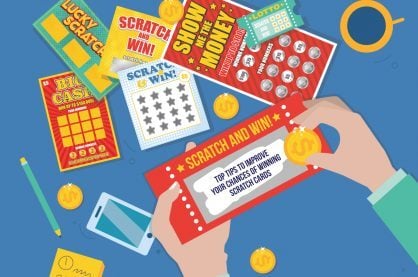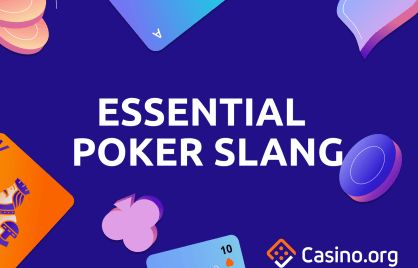Week 1 and Early Season NFL Betting: What You Need to Know

Summarize this post
Early Season NFL Betting: What You’ll Learn
- Understanding Matchups: Gain insights on how to assess team matchups and player performances for Week 1 to make informed bets.
- Betting Strategies: Discover effective betting strategies tailored specifically for the early NFL season to maximize your chances of success.
- Analyzing Preseason Performance: Learn how to evaluate preseason games and narratives to better gauge team strengths and weaknesses.
- Bankroll Management: Understand the importance of managing your bankroll wisely during the early weeks of the NFL season.
- Identifying Value Bets: Find out how to spot value in betting lines and odds to take advantage of early season opportunities.
The most fundamental truth a sports handicapper must internalize is this: point spreads are not predictions of game outcomes. Rather, they are calculated to attract balanced action on both sides of a wager.
Sportsbooks charge a 10% commission—known as the juice—on losing bets. With equal money wagered on each side, the books are guaranteed a profit.
Because of this, oddsmakers must account for public perception, opening a lucrative window for quantitative analysts to exploit inflated lines.
Value hunters know the edge isn’t in the obvious mismatch (pro tip: they rarely if ever exist relative to the spread or total) but in identifying lines that are subtly skewed by collective bias and pouncing before the market corrects.
Early-Season Betting
This holds true across all sports and all seasons, but early-season betting is particularly fertile, especially in pro sports, with NFL leading the way. Public overreaction to small sample sizes creates value for those who zig when the betting masses zag. In NFL Week 1, this dynamic is especially pronounced. Consider these case studies from top NFL Week 1 prediction models:
- Teams with at least four fewer wins than their opponent from the prior season are 121-90-3 ATS.
- Road underdogs in that subset win at a 60.4% clip (61-40 ATS).
Why? Because these matchups create a classic undervalued vs. overvalued situation. The public gravitates toward teams with better prior records and playoff appearances, and sportsbooks shade the line in response. This creates an opportunity to back the less glamorous team at a favorable price.
Think of it this way: what if you magically received an extra 1 to 1.5 points on every NFL wager? That hypothetical edge would be massive over time. While not literally possible, recognizing when the public has artificially inflated a line makes this hypothetical a reality in select situations.

Image Credit: zimmytws/Shutterstock
Another proven system:
- NFL Week 1 teams that missed the playoffs facing a team that made the postseason are 91-66-4 ATS.
Same logic applies. The public clings to the teams they watched in January. “Name” teams generate betting volume based on reputation, not value.
An outlier worth noting:
- Away favorites in this subset are 0-2 ATS. While a small sample, this aligns with the thesis. If the oddsmaker is favoring a road team that didn’t make the playoffs against one that did, it suggests a strong projection shift, one likely rooted in offseason hype rather than evidence. From a sharp betting perspective, this anomaly is not dismissed as randomness but respected as signal. I’ve removed that subset from my stored model.
Opening-week totals present similar opportunities.
- In NFL Week 1, when the posted total is at least 4 points lower than a team’s average over/under the previous season, the under is 60-37.
Casual bettors hate betting unders. When a team known for high-scoring games is assigned a suspiciously low total, the public reflexively bets the over. But sportsbooks shade high-scoring teams’ totals upward, knowing where the money will go. That’s where contrarian bettors find value: on totals that appear “too low” but in fact, aren’t low enough.
Another angle:
- If a total is 5.5+ points lower than the average of both teams’ totals from the previous season, the under is 53-29-1.
This fits the best totals betting systems: when a number looks too low, bet the under. It isn’t a deliberate trap for public money per se, though from a practical standpoint it is—and sharp bettors know how to spring it.
Systems for Betting Overs
There are valid systems for betting overs, particularly when totals seem too high relative to recent stats. However, the sharper edge consistently lies with unders, especially early in the season when the market overreacts to recent form.
At the heart of this: recreational bettors prefer to root for favorites and high-scoring games—what’s fun to cheer for. But pros embrace discomfort. They fade emotional bets and look for mispriced value.
It’s not fun to root for no points. It’s nerve-racking to back a bad team. But money doesn’t care about comfort. Pros understand there’s no such thing as a small edge. When enough tiny advantages stack up on the same side, that’s a value bet.
I call it “psychological juice.” Casual bettors subconsciously believe losing with a good team is less painful than losing with a bad one. But pros understand all losses are equal, a losing bet is a losing bet, regardless of team quality.

Image Credit: zimmytws/Shutterstock
Unders and underdogs offer a broad, sustainable edge, especially early in the season when recency bias is loudest. Example:
- Since 2009, NFL underdogs of +5 or less in Weeks 1–3 are 254-184-17 ATS.
- Subset: If the team has a worse winning percentage than their opponent, they’re 70-36-2 ATS.
- Further subset: In divisional games, that mark spikes to 19-5-1 (79.2%).
Divisional underdogs tend to perform slightly better than non-divisional ones across the board. The prevailing theory on why it’s even more prosperous in the initial weeks is that early-season divisional games are the first matchup, and the superior team has less incentive to blow out a familiar foe and give them bulletin board material for the rematch.
Moving Into Week 2
Week 2 betting is also fertile ground for exploiting emotional overreaction, though it’s subtler than some would-be sharp touts suggest:
- Teams off a Week 1 loss facing a Week 1 winner are 128-114-6 ATS.
- If there’s a 4+ point difference in margin of victory/defeat, the edge slightly increases to 127-111-6.
Is this overwhelming? No. But it’s statistically meaningful enough to flash a warning: don’t let last week’s result steer your bet, insofar as anticipating form to continue.
Another sharp angle:
- In Week 2, a team off a loss facing a team off an upset win as an underdog is 50-36-1 ATS (58.1%).
- Likewise, a Week 2 team that lost as a favorite vs. a team that won is 57% ATS.
Wise guys bet on reversion to the mean, not on streaks. The oddsmakers occasionally miss short-term but rarely over the long run. They correct swiftly or more often, the teams that they were most “inaccurate” about in fact prove them more precise the next week.
That’s why contrarian betting splits are essential. Public bet percentages are widely available, but savvy bettors corroborate those numbers across multiple sources (Vegas, offshore, domestic books) to spot overcorrections. Do not rely in just one website, even the big name ones.
Small-sample overreactions are more common early in the year, making this the prime time to bet against the herd. While a system can be quantified with clear, trackable numbers like those above, a theory, by my definition, serves a similar purpose but lacks the strict objectivity required for spreadsheet validation. Its parameters are more interpretive and less easily measured.
- One such theory: Teams with first-year starting QBs, especially high-profile rookies, are inherently unpredictable. If they start hot, they tend to regress.
- A young QB with 6 TDs and 0 INTs through two games? Fade them.
- Conversely, proven veterans with slow starts are prime buy-low candidates.
When it comes to quarterbacks, bet the bounce-back from the trusted pro, not the continuation of an unsustainable rookie run.
Trust the Oddsmakers

Image Credit: zimmytws/Shutterstock
In summary: defer to the oddsmaker’s wisdom. They’re right more often than not. When the market overreacts, the value lies in trusting the original number.
In fact, here is yet another case study that proves the more “wrong” the oddsmakers appear in NFL Week 1, the more “right” they tend to be proven the following week. History shows that overreaction is the real enemy of smart betting. Teams that covered the spread by 14 or more points in their opener are just 68-84-7 ATS in Week 2.
To be transparent, this edge has tapered off slightly in recent seasons, but it still reflects a recurring trend: teams that exceed expectations in Week 1 are often overvalued the next time out.
Conversely, teams that failed to cover by at least seven points in Week 1 have bounced back strong, going 149-119-11 ATS since 1993. This is classic regression to the mean in action, fueled by public overcorrection.
And totals? Same logic. If a total seems way off, high or low, don’t just trust your gut or the raw math. Trust the market-maker who set the line. More often than not, they’re signaling that recent trends are deceiving.
Additional Note on Preseason Influence
Preseason results should be viewed with extreme skepticism. A standout performance by young players in exhibition games often distorts both point spreads and totals, leading to mispriced lines in September.
Whether a team dominated all three preseason matchups (four in the recent past) or looked completely overmatched, such results should have minimal, if any, impact on accurate power ratings.
That said, exaggerated market reactions to preseason outcomes can create value. If an impressive or lopsided NFLX slate causes a line to shift by half a point or more, savvy bettors should view it as a potential fade opportunity.
Also, while this may seem obvious to experienced bettors, it’s worth repeating significant injuries entering the regular season must be accounted for. However, overanalyzing situations where a star player is returning from injury can also be dangerous. NFL preseason reps and practice workloads are primarily focused on rehabilitation, not performance precision, and should not be over-weighted in betting models.
There’s a memorable line from It’s a Wonderful Life that perfectly captures the NFL Week 1 and 2 betting the NFL dynamics:
“Can’t you understand what’s happening here? Don’t you see what’s happening? Potter isn’t selling. Potter’s buying! And why? Because we’re panicky and he’s not. That’s why. He’s picking up some bargains.”
Henry F. Potter may be one of cinema’s greatest villains, but in the world of sports betting, be like Mr. Potter. While the public panics, Potter finds value. That’s the essence of early season counterintuitive betting: buy when others are too reactionary to see the opportunity, instead creating one.
Title Image Credit: zimmytws/Shutterstock


